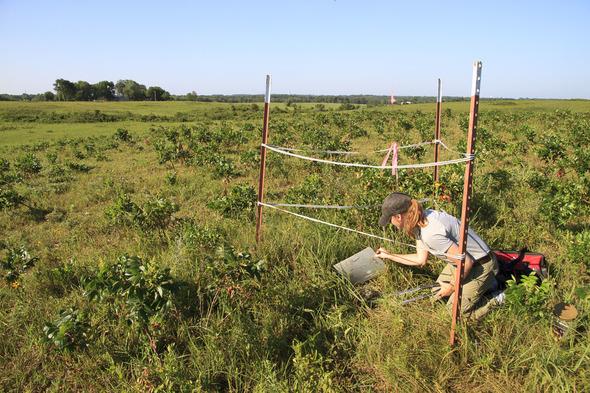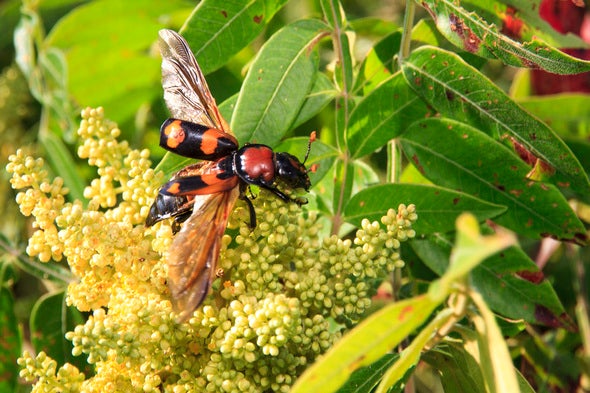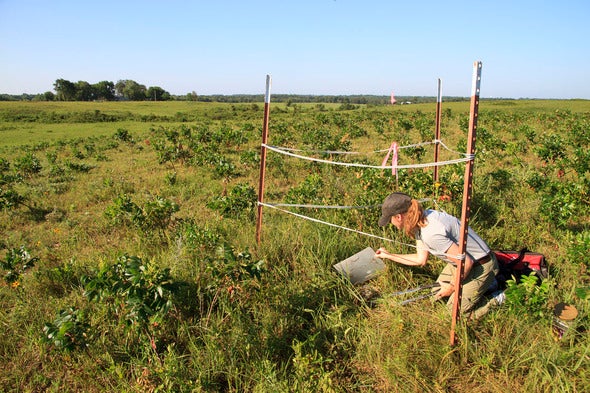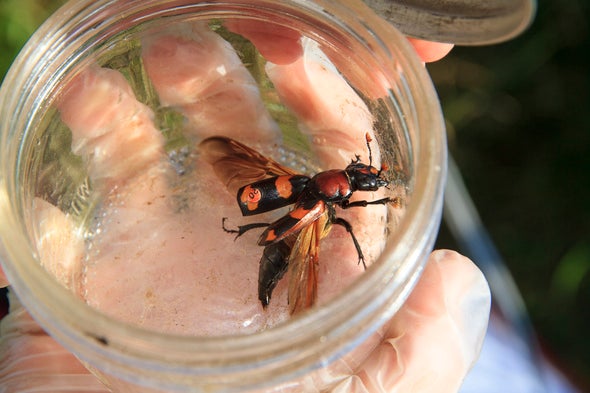
Xplor reconnects kids to nature and helps them find adventure in their own backyard. Free to residents of Missouri.








EL DORADO SPRINGS, Mo.—The Missouri Department of Conservation (MDC) and its partners are working to restore a bug that eats dead flesh. They’re hoping to bring it back from the dead.
The American burying beetle (Nicrophorus americanus) is the largest of a class of carrion beetles and used to be found in 35 states, including Missouri. Now federally-endangered, the beetles are struggling to hang on in less than seven states. It’s a struggle they lost in Missouri decades ago.
In 2012, MDC entered into a partnership with the St. Louis Zoo, the U.S. Fish and Wildlife Service (USFWS), and the Nature Conservancy (TNC) to bring the beetle back from extirpation within the Show-Me-State.
The St. Louis Zoo is breeding the beetles at their Monsanto Insectarium from stock acquired in Arkansas. Each of the partners has participated in a multi-year program to re-introduce the beetles onto Wah’Kon-Tah Prairie, located near El Dorado Springs in the southwest portion of the state.
Wah’Kon-Tah is jointly owned by MDC and TNC, and managed by MDC. It contains 3,000 acres of tallgrass prairie spanning Cedar and St. Clair Counties which biologists hope will offer a good chance for the insects to thrive.
MDC’s St. Louis Regional Natural History Biologist Andrea Schuhmann is heading up a study to determine the success of the effort. The basis for the study is the mark-recapture method, and it begins by setting out traps to capture the burying beetles.
“We mark the individuals we capture. Based on the proportion of new, unmarked beetles to previously captured beetles we can then develop the population estimate,” Schuhmann said. “We want to get a sense of how many wild beetles are being produced out here and are surviving following the reintroduction.”
Simply put, finding a high proportion of “new” beetles—those without tags—to the already tagged ones, indicates good population growth. However, recapturing mostly the same individuals over again points to fewer individuals and a smaller, less expansive population.
According to Schumann, 48 traps were scattered on Wah’Kon-Tah to get a good representation of all the different habitat and management types on the prairie.
The traps consist of holes dug in the ground in which plastic buckets are placed. The holes are covered by a wire grating. The beetles can enter the grating but the openings are small enough to make it difficult for them to spread their wings to fly back through. The bucket’s smooth plastic prevents them from getting enough traction to crawl out. A jar of raw, decaying chicken in the bucket provides an enticement to draw the carrion-loving beetles to the traps.
Biologists check the traps daily during a week of monitoring. They weigh, measure, and record each new American burying beetle they find. All are fitted with a miniature, numbered tag that is glued to the insect’s exoskeleton. Any individuals that already have tags—the recaptured ones—are simply recorded and set free.
Schuhmann piloted the program last year and was able to collect some preliminary data. However, this is the first year the study has begun in earnest. She and her crew spent a week trapping in mid-June to get a sense for the population approaching the breeding season, and another week in July to monitor beetles emerging from the breeding period. She will spend a third week in August to determine how the population looks going into the winter.
So what does the study indicate so far?
Schumann said it was too early to tell. This is still the early stage of a multi-year study and more data needs to be gathered and analyzed, so there are no definitive answers yet. Nature does not reveal its secrets too quickly. But the preliminary results are encouraging – the population does appear to be growing.
Schumann did say the restoration’s ultimate goal is to produce and maintain a self-sustaining population of American burying beetles. Because of its brilliant coloring, unusual carrion-eating habits, and the fact that the beetles demonstrate “family values” with mated pairs raising young together, the American burying beetle has plenty of appeal to fuel interest in restoration.
“American burying beetles have helped to pave the way for awareness of other, less charismatic insects that are equally important. They all have major roles in these critical ecosystems by providing food resources for the birds, mammals, reptiles and amphibians we all love,” said Schuhmann.
“It’s not every day you get to work with federally-endangered species. It’s really exciting to have a role in the nation-wide conservation of this animal,” she said.
For more information on the American burying beetle, visit the online MDC Field Guide at https://goo.gl/BVR8R1.